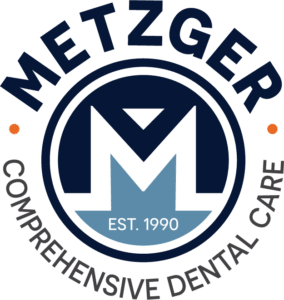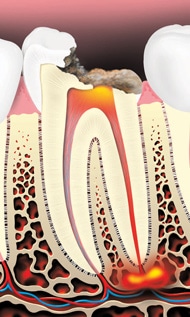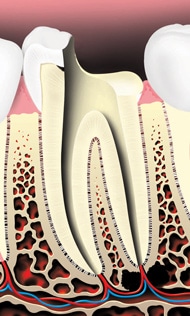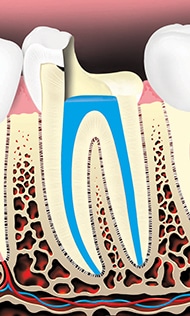Root Canals (Endodontics)
Root canal treatment can save your tooth that has become severely infected or decayed. While root canals have gotten a bad reputation, they are the type of treatment that actually makes you feel better!
Your teeth should last a lifetime, yet disease or injury can cause damage to the pulp and roots of your teeth. If the problem pulp is not removed, the gum tissue around the root can become infected. This infection can lead to pain, swelling, and damage to the bone.
 Thankfully, it is possible to save your tooth, by performing a root canal (Endodontic) treatment. However, if the diseased tooth goes untreated, you are at risk for having the tooth extracted.
Thankfully, it is possible to save your tooth, by performing a root canal (Endodontic) treatment. However, if the diseased tooth goes untreated, you are at risk for having the tooth extracted.
How do you know if you might need a root canal? Here are some of the common symptoms:
- Extreme sensitivity to heat or cold
- Swelling or tenderness in your gums
- Darkening or discoloration of your tooth
- Toothache that worsens when you eat or when pressure is applied
- Pain that wakes you up or pain even when you’re not eating or drinking
You should not ignore these symptoms, as they may lead to further complications such as an abscessed tooth or worsened pain. In some cases, our doctors will refer you to an Endodontist, who specializes in treating disease of the pulp and roots.
After your root canal treatment is complete, we will complete a restoration to protect and strengthen your tooth.
Still Curious?
General Steps of Root Canal Treatment
Root canal therapy may involve one or more dental visits. Your dentist or endodontist will perform the necessary steps to save your tooth:
- Your tooth is numbed for your comfort. A thin, flexible sheet of latex or non-latex material called a rubber dam is placed over your tooth to keep it dry. An opening is made through the crown of the tooth into the pulp chamber.
- Your tooth’s nerve or pulp is removed from the pulp chamber and the canal of each root of the tooth. Each root canal is cleaned, shaped and disinfected so that it can be filled.
- Your dentist may place medicine in the pulp chamber and root canal(s) to help treat the infection.
- The treated root canals are filled with a rubber-like material to seal them.
- A temporary filling is placed in your tooth to prevent infection of the root canals. You may be given antibiotics if the infection has spread beyond the end of the root(s).
- Finally, your dentist removes the temporary filling and restores the tooth with a crown or a permanent filling to strengthen it and improve the way it looks. If an endodontist performs the procedure, they usually recommend that you return to your general dentist for this step.
It is very important to follow instructions from your dental team and to attend all of your follow-up appointments.
Patient education content ©2020 American Dental Association. All rights reserved. “ADA” and the “ADA” Logo are registered trademarks of the American Dental Association.
There's no better time to get started.
Call (817) 428-1800 or click below to schedule your appointment today.
What Our Patients Have to Say
Read more reviews from thousands of our happy patients
1213 Hall Johnson Road, Suite 100, Colleyville, TX 76034
| Monday - Wednesday | 8:00 AM — 5:00 PM |
| Thursday | 8:00 AM — 4:00 PM |
| Friday - Sunday | Closed |
We are closed for lunch from 1 PM – 2 PM.






